UC Merced Physics REU: Sample Research Projects
A selection of potential research projects is included below. For general information, please see the general page for the UC Merced Physics REU.
Astrophysics
Hunting for Snail (Phase) Spirals in Simulated Milky Way Disks: Looking for Evidence of a Galactic Collision in the Milky Way's Past (astrophysics theory, S. Loebman)
We live inside a truly exciting astrophysical laboratory—the Milky Way galaxy—which provides a unique detailed perspective into the dynamics of stars and the physics of galaxy formation. Recent observational data from the Gaia space telescope has revealed that the Milky Way disk is in dramatic disequilibrium today: there is clear evidence of a "phase spiral" of stars that ripples in position and velocities nearby the Sun. It is thought that this phase spiral could have been generated by the impact of a satellite galaxy, Sagittarius Dwarf Spheroidal, on the Milky Way's disk in the past. However, observations of the Milky Way span a complex multi-dimensional space which necessitates sophisticated modeling to interpret.
In this REU project, student researchers will hunt for phase spirals in simulated cosmological Milky Way galaxies. During the REU project, students will develop coding expertise in Python, learn how to connect to remote computing resources, read in large simulation files using Jupyter Notebooks, and generate visualizations and analysis of simulation data, including static plots and animated gifs. Once found, they will explore the origin and persistence of these features in the simulations, as well as explore how departures from disequilibrium impact key properties we measure for the Milky Way.
Understanding Dark Matter through Strong Gravitational Lensing; Star Formation in Low-Mass Galaxies (astrophysics observation, A. Nierenberg)
Project description will be added. Title indicates only a general topic.
Atomic, Molecular, and Optical (AMO) Physics and Quantum Optics
Dilution refrigerator fiber integration for entanglement and photon counting (Quantum / AMO experiment, J. Sharping)
Quantum physics is attracting attention both globally and in the US. Among NSF’s 10 big ideas, “Quantum Leap” seeks to exploit “quantum mechanics to observe, manipulate, and control the behavior of particles and energy at atomic and subatomic scales, resulting in next-generation technologies for sensing, computing, modeling, and communicating.” UC Merced and its students have benefitted from the availability of two Oxford DR200 dilution refrigerators. The Sharping group seeks to upgrade those refrigerators to include single-photon counting capability. Superconducting transition edge sensors operate at low temperature (>1K) and are the best technology available for photon counting in the telecommunications bandwidth.
The Sharping group seeks undergraduate participation in outfitting the dilution refrigerators for photon counting by designing and installing fiber-optic feedthroughs, confirming optical transmission and estimating loss, and finally in testing transition edge sensors for use in advanced experiments. Participants also gain valuable experience by assisting with the regular operation of these dilution refrigerators.
Applied Photonics Research Group website
Implementing quantum simulators with Qiskit and cloud quantum computers (Quantum Optics, Quantum Computing, and Quantum Information theory, L. Tian)
Quantum computing is a fast growing field with enormous potential impact not only for physics research but also for industrial and economical applications. This project will train students to implement a special-purpose quantum computer – quantum simulator – with the superconducting qubits in the IBM Qiskit platform and cloud quantum computers.
Through this project, students will learn elementary quantum computing skills, including developing quantum circuits, designing quantum circuits to implement desired interactions between qubits, executing cloud-based quantum experiments, characterizing quantum states and dynamics of quantum simulators by analyzing data, and exploiting calibration information. We look for students with strong interests in quantum information science. The prerequisites for this project include undergraduate quantum mechanics on the level of the first five chapters of Griffith’s Introduction to Quantum Mechanics and some computer programming skills such as Matlab and/or Python.
Biophysics / Soft Condensed Matter
Modeling coronavirus assembly pathways (biophysics theory, A. Gopinathan)
The replication and assembly pathways of SARS-CoV-2, responsible for COVID-19, resemble those of other coronaviruses; nevertheless, the mechanisms involved are unclear. While in vitro self- assembly experiments and computer simulations of viruses, including HIV and HBV, have furthered our understanding of their assembly mechanisms, similar studies on coronavirus assembly are missing. Most current attention focuses on the spike protein, which enables viral entry but plays no role in assembly. With the goal of determining ways to disrupt viral assembly and budding, we have formed a consortium across three UC campuses to investigate the role of the other proteins in coronavirus self-assembly in lipid membranes through in vivo and in vitro experiments and computer simulations. The focus of our team's project will be to use analytical theory and coarse-grained computer simulations to study the interactions and aggregation of proteins, the interaction of the membrane with proteins, and the resultant dynamics of the budding of virus.
Undergraduates working on this project will start with modeling the system through coupled partial differential equations and then solve them numerically to predict the dynamics of budding based on system parameters. Predictions of the theory will be compared to results from experimental collaborators using atomic force microscopy (AFM) and confocal microscopy. Predictions that show promise for slowing or stopping the virus assembly will ultimately be pursued experimentally with a view to developing new therapies. The undergraduate research efforts will therefore contribute toward the development of a robust model platform to perform fundamental studies and test therapies targeted toward disrupting the self- assembly of viruses.
Exploring molecular shuttles and their tracks: A hands-on biophysics experience (biophysics experiment or theory, J. Xu)
 Research projects are customized to match individual students’ interests and fortify their research skills. Undergraduates will have the opportunity to explore the physics of molecular shuttles and their tracks, through hands-on experiments, theoretical inquiry, or quantitative data analyses. Students with an affinity for experiments will acquire hands-on experience with advanced optical instruments, including the Nobel Prize-winning laser trap. Students inclined towards theoretical inquiries will develop computational skills, including Monte Carlo and stochastic simulation methods. Students curious about quantitative data analysis will learn common mathematical methods in image analysis and statistical analysis. These immersive research experiences have the potential to result in direct measurements of the mechanical motions of molecular shuttles, provide mechanistic insights of key controls of molecular shuttles, and uncover previously unexplored mechanical properties in their molecular tracks. Students interested in these scientific explorations and research experiences are encouraged to apply.
Research projects are customized to match individual students’ interests and fortify their research skills. Undergraduates will have the opportunity to explore the physics of molecular shuttles and their tracks, through hands-on experiments, theoretical inquiry, or quantitative data analyses. Students with an affinity for experiments will acquire hands-on experience with advanced optical instruments, including the Nobel Prize-winning laser trap. Students inclined towards theoretical inquiries will develop computational skills, including Monte Carlo and stochastic simulation methods. Students curious about quantitative data analysis will learn common mathematical methods in image analysis and statistical analysis. These immersive research experiences have the potential to result in direct measurements of the mechanical motions of molecular shuttles, provide mechanistic insights of key controls of molecular shuttles, and uncover previously unexplored mechanical properties in their molecular tracks. Students interested in these scientific explorations and research experiences are encouraged to apply.
Mentoring experience: Our lab has empowered numerous first-generation undergraduates with impactful research experiences, resulting in five co-authorships in peer-reviewed publications and one first-authorship featured in a Special Collection by the Biophysical Journal.
Analysis of chaotic mixing in active fluids (nonlinear dynamics/biophysics theory, K. Mitchell)
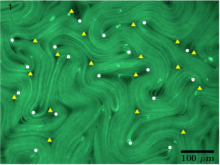
Undergraduate students will conduct research in the areas of nonlinear dynamics and biophysics. This work concerns a new class of bio-inspired fluidic materials called "active nematics". These fluids consist of self-mixing biopolymers, powered at the microscale by ATP-driven molecular motors. This system is locally ordered, but exhibits localized topological defects that are dynamically and continually created and destroyed, and which braid around one another as the defects move through the fluid. The objective of this work is to understand the chaotic dynamics associated with the dynamics of these defects.
Students will analyze experimental movies obtained from microscopy imaging of the active material. This will be done using several computational and data analysis packages, including Matlab, Python, and ImageJ. Students will learn and apply image-analysis techniques to extract topological defects, determine fluid velocity fields, and to characterize the chaotic dynamics in the system. There will be a close collaboration between this theoretical analysis and the laboratory experiments.
Mitchell Research Group website
Modeling in active biological matter: Cytoskeletal and cellular structures and dynamics (biophysics theory, K. Dasbiswas)
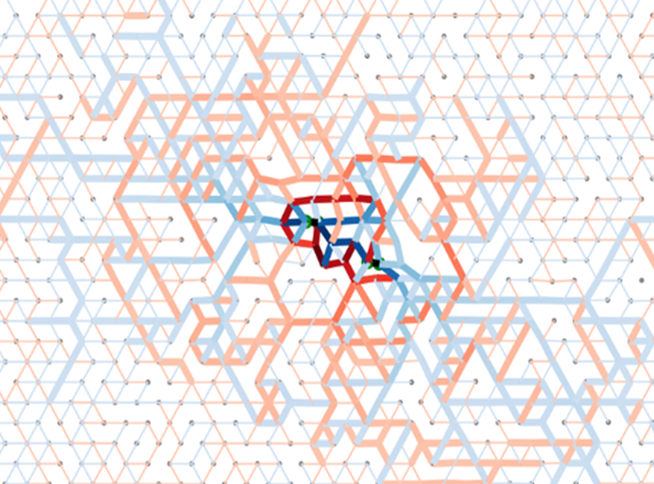
The Dasbiswas group uses computation and modeling to gain quantitative understanding of how cells use mechanical forces to structure themselves and their internal components. Such structural order is necessary for critical biological functions such as cell division, muscle contraction and cell migration– the latter being important both for immune function and cancer proliferation. Understanding the underlying mechanics of cell biological processes can therefore inform both therapeutic and tissue engineering strategies. Furthermore, the study of living matter that is driven out of thermodynamic equilibrium by active mechanical forces generated by biochemical reactions, leads to new theories of collective phenomena such as flocking and spontaneous shape changes.
Students will use an array of modeling techniques from soft matter physics ranging from elasticity and hydrodynamics, to discrete, stochastic processes. A current research project in the group uses simulations of an elastic fiber network to understand how mechanical forces propagate in the cellular cytoskeleton, a disordered network of biopolymers responsible for force-generation and structural integrity in the cell. We want to investigate how the force transmission depends on the mechanics of individual fibers as well as network connectivity. Similar projects related to structure formation in the cell and of multicellular assemblies, and shape change of tissue, are available in the group and accessible as 10- week undergraduate projects. The mentee will be trained in computational methods, such as agent-based molecular dynamic simulations, mathematical techniques such as differential equations arising in elasticity theory and nonequilibrium statistical physics, and in analysis of data obtained from both simulations as well as experimental images from collaborating laboratories.
Active Fluids (soft condensed matter / biophysics experiment, L. Hirst)
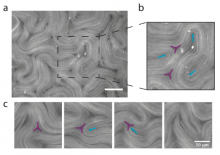
Ordinary fluids are equilibrium systems that exist between the gas and solid phases in a material. Their molecular structure is stable and they exhibit behaviors well described by the physics of thermodynamics and fluid dynamics. Active fluids represent a relatively new class of materials, driven by an internal power source. Active fluids occur in nature (the complex machinery of the cell cytoskeleton for example, powered by ATP) and can be reconstituted in the lab from biological components. The Hirst group is working with examples of a biologically inspired active fluids composed of microtubules and kinesin motor proteins. These fluids are composed of short filament and so also have molecular orientational order (they are nematic-like, i.e. active nematics). Active nematic fluids exhibit fascinating phenomena; they are self- mixing (spontaneous flows occur and persist in the presence of an ATP energy source) and have topological defects (points in the fluid where the molecular order breaks down). Complex out of equilibrium fluid dynamics occur when the system is supplied with chemical energy and our lab is investigating the fundamental properties of this system.
Undergraduate students will engage in experiments in which they tune the self-mixing properties of the active fluids externally by exposing the flows to environmental effects, such as the physical and chemical properties of the substrates. For example, increasing viscosity of an underlying oil layer increases defect density and decreases flow speeds and microfabricated substrates can direct defect motions. In this project, students will learn how to prepare and image active nematics, perform experiments alongside graduate students, and work on physical characterization of the active flows using concepts developed from non- linear dynamics and chaos theory.
Structure in Fluids and Soft Matter systems (fluid dynamics / soft condensed matter experiment, D. Kleckner)
Project description will be added.
Condensed Matter and Solar Energy
First principles electronic structure theory (condensed matter theory, D. Strubbe)
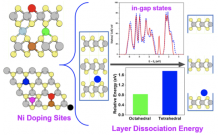 We have a variety of computational projects in condensed matter physics, based on quantum mechanical simulations of the electrons in materials. Possible project areas: (1) behavior of electrons in materials under extreme pressures and/or temperatures, as occurs in planets and experiments on laser-induced fusion, also known as “high energy density science”; (2) studies of two-dimensional materials like graphene, including doping, sliding, or twisting of layers; (3) implementing new functionality in open-source codes used in this area like Octopus (https://octopus-code.org).
We have a variety of computational projects in condensed matter physics, based on quantum mechanical simulations of the electrons in materials. Possible project areas: (1) behavior of electrons in materials under extreme pressures and/or temperatures, as occurs in planets and experiments on laser-induced fusion, also known as “high energy density science”; (2) studies of two-dimensional materials like graphene, including doping, sliding, or twisting of layers; (3) implementing new functionality in open-source codes used in this area like Octopus (https://octopus-code.org).
Any of the following would be helpful, though not required: knowledge of quantum mechanics, computational physics, and/or condensed matter physics, and programming skills.
Strubbe Ab Initio Laboratory (SAIL) website
Opto-electronic properties of semi-conducting materials for solar energy harvesting (Solar Energy, CM/AMO experiment, S. Ghosh)
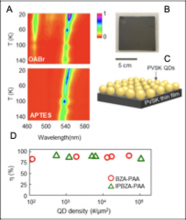
The Ghosh lab focuses on investigating opto- electronic properties of semiconducting materials, which include photo generated charge carrier transport and recombination, and exciton-spin interactions, using ultrafast optical techniques. Organo-metal halide perovskites (OMHP) have emerged as excellent candidates for solar energy harvesting devices. A tandem device would not only offer a route towards increasing power conversion efficiency (PCE) beyond the current 23%, but further improve device stability, a problem with OMHP thin film solar cells.
Typical training of an undergraduate researcher will include photoluminescence (PL) spectroscopy using tunable laser sources and variable temperature cryogenic systems to map out the phase space of semiconducting thin films or quantum dots (QDs), such as shown in Fig. 1A, where the semiconductor is an organo-metal halide perovskite (OMHP). Mentees will learn how to fabricate OMHP thin films by spin-coating or electro spraying, as shown in Fig 1B, and deposition of OMHP QDs on them to develop tandem structures, such as in Fig 1C. In addition to these various optical characterizations, training will be offered on charge transport and transfer efficiency h measurements (Fig. 1D) for estimating device performance. Projects such as this are highly versatile as variation of OMHP composition, QD surface properties, QD size, etc. can tune the device properties significantly and offer insights into fundamental physics and material properties.
Synthesis and property tuning of quantum materials (condensed matter experiment, H. Cai)
The Cai group focuses on exploring the frontiers of quantum materials and 2D materials. These materials are the building blocks for future applications in quantum information science and high- performance electronic devices. We aim to discover new metastable quantum materials using the cutting- edge synthesis methods, such as chemical vapor deposition and chemical vapor transport under non- equilibrium conditions. We carry out property engineering on these materials by introducing heterogeneities such as strain, dopants, alloying, interface at heterostructures, etc.
The undergraduate students will study the synthesis of quantum materials such as topological insulators, and the effect of heterogeneities such as defects and dopants on their properties. They will be trained to use a chemical vapor deposition system to synthesize the samples and study the effect of growth conditions such as temperature and pressure on the morphology, structure and properties of the samples. The student will be capable of adjusting growth conditions to introduce heterogeneities into the quantum materials during synthesis and use a Raman spectrometer with a cryostat to characterize the temperature dependent lattice vibration properties of the synthesized materials. Through weekly group meetings, the mentee will report findings and discuss the research progress with the group and help identify the next generation of quantum, 2D materials.

